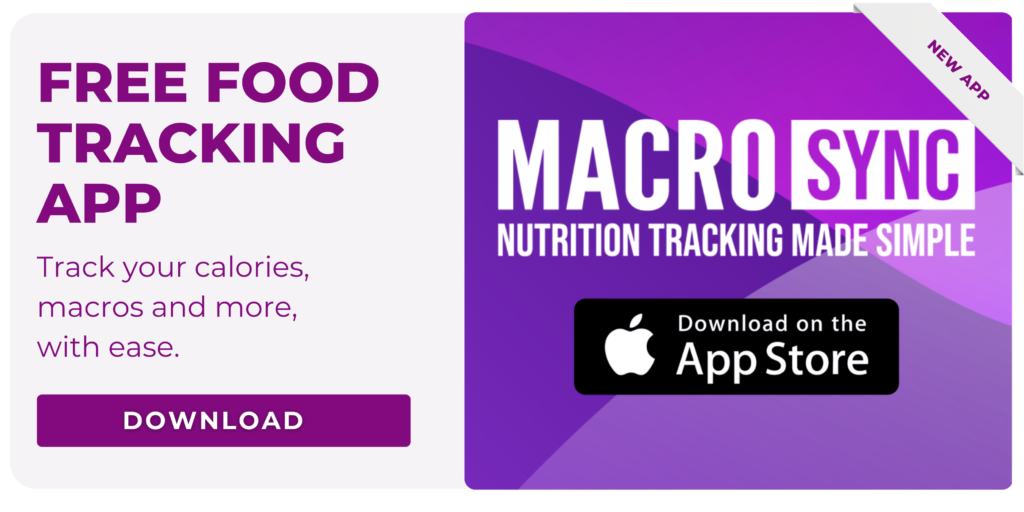With the advent of the internet, there has been a large uptick in weight loss programs available. We now have access to meal plans, structured programs, and even food delivery. Convenience has never been higher.
So, this begs the question: Which program is the best one? Well, as with anything else fitness related, there is no one right answer. It all boils down to your personal needs and circumstances. After all, the best weight loss program is the one that works for you.
Here, I’ve compiled a list of six different weight loss programs, as found through a simple Google search. To try to remain as objective as possible, I have briefly evaluated these programs across five different metrics.
Jump to a Topic
The Best Weight Loss Programs of 2025
Five Metrics to Consider
1. Cost
This is usually the first thing most people look into first before committing to any program. Most of these programs charge monthly, but also offer discounts for extended contracts, e.g. 3, 6, or 12 months. I’ll also note here that the prices here are current as of the time of this writing, and may change down the line.
2. Feature Emphasis
While all of these programs center around weight loss, most have a couple of features inherently specific to them. If they have any particular emphasis that they revolve around or cater to, I’ll mention it here.
3. Meal Delivery
Some of these programs offer custom, premade foods and meals that can be shipped directly to the customer. These are usually included in the subscription cost for the program itself.
4. GLP-1 Support
GLP-1 drugs are an emerging class of compounds intended to help treat type 2 diabetes and obesity. They work as agonists against the hormone glucagon-like peptide-1 (GLP-1) in the body. This promotes a host of physiological effects, including promoting insulin secretion, slowing gastric emptying, and promoting satiety.
5. Supported Diets
The listed companies are weight loss programs, not necessarily weight loss diets. While these programs can be compatible with specific diets, they are not in of themselves biased toward any particular eating style. As such, I’ve listed some of the options each program provides for accommodating specific diets. These include approaches such as vegetarian, vegan, keto/low carb, paleo, etc.
The Diet Programs
1. Weight Watchers
Weight Watchers is the oldest program listed here, founded in 1963 by Jean Nidetch, Al Lippert, and Felice Lippert.
Cost
Weight Watchers offers three different programs, based on what’s offered. The first is their basic points program, which starts at $10/month. This gives a points budget, Food plan, their app, and access to a registered dietician. The next tier, at $25/month, also includes virtual workshops and weekly meetings with a coach. Finally, the last plan starts at $49/month, and adds support for weight loss medications like GLP-1s. This final plan does not cover the cost of medication, and jumps to $99/month after the first month.
Featured Emphasis
Weight Watchers centers around the points system, a method for tracking food. Here, each food is given a point value based on its nutrient composition. Each client has a set number of daily points to work with, creating a dietary budget to remain within. This system is analogous to tracking calories or macros.
Meal Delivery
Weight Watchers does not provide any sort of meal delivery service, and is instead designed to work with the foods the client purchases or has on hand.
GLP-1 Support
Weight Watchers has a program specifically designed to work around the use of fat loss drugs, particularly GLP-1s. However, it is their costliest program, with the first month at $49, and every month after set at $99. This also does not include the cost of the weight loss medications themselves.
Diets Included
The points system can hypothetically be adapted to any particular dieting approach, although it seems to favor flexible dieting the most.

2. Noom
Noom is a company founded in 2008 by Artem Petakov and Saeju Jeong.
Cost
Noom has two types of plans: A basic diet plan, and a plan that includes weight loss medication. The basic plan is customized guidance via a suggested calorie range, psychological profile, and ideal rate of weight loss. This plan costs $17.42-$70, based on time commitment. The other plan includes weight loss medication. Noom can prescribe and distribute GLP-1 medication, as well as metformin (an oral diabetic drug associated with decreases in appetite and increases in satiety). This plan costs $149/month, including the GLP-1 medication.
Featured Emphasis
Noom emphasizes psychology-based approaches to weight loss, looking at behavior based factors to maximize the chances of long term results. They pair this with optimization of weight loss drugs to get the best results possible.
Meal Delivery
Noom does not provide meal delivery services.
GLP-1 Support
Noom heavily structures around GLP-1 support, with one of their two plans focused around GLP-1 use as an adjuvant to diet. Noom also directly prescribes the drug to clients, starting at the cost of $149.
Diets Included
Noom does not explicitly state which diets it encompasses in its counseling, but it is likely to be a flexible diet based approach given the emphasis on longevity.
3. PlateJoy
Platejoy is a company founded in 2012 by Christina Bognet.
Cost
PlateJoy subscriptions come in three offerings: month to month, 6 month, and 12 month. These work out to $12.99, 11.50, and 8.25/month, respectively.
Featured Emphasis
PlateJoy works with what is known as the PlateJoy path. This method ranks different foods based on their nutritional content, then uses them to create balanced meals around the highest-ranking ingredients. These are intended to guide clients toward what they should be shopping for when buying groceries.
Meal Delivery
PlateJoy does not itself deliver meals, but instead works through Amazon Fresh or Instacart. Clients create their grocery list through PlateJoy, then use those delivery apps to get their ingredients.
GLP-1 Support
PlateJoy does not make any recommendations regarding GLP-1 medications.
Diets Included
PlateJoy caters to many of the dieting approaches commonly used, including low carb, Mediterranean, vegetarian, vegan, pescatarian, whole foods, paleo, and gluten free.
4. Calibrate
Calibrate is a company founded in 2020 by Isabelle Kenyon.
Cost of Program
Calibrate’s cost comprises of two different parts – the program itself, and the GLP-1 medication used alongside it. The program itself is $199/month, with a minimum 3 month commitment. The medication cost is contingent on insurance, but averages about $25/month, after the deductible is met. Additionally, Calibrate claims to refund up to 50% of paid fees if a client does not lose 10% or more of their bodyweight in 12 months.
Featured Emphasis
Calibrate’s entire system revolves around the use of GLP-1 medication, and maximizing their potential. To ensure safe use, clients provide routine lab work, and must check in periodically with a licensed physician. Also, to make the transition as smooth as possible, Calibrate helps with navigating clients’ health insurance.
Meal Delivery
Calibrate does not provide meal plans or meal delivery. The focus is instead exclusively on other factors such as diet, exercise, sleep, and emotional help.
GLP-1 Support
As above, Calibrate revolves heavily around the use of GLP-1 medication. As such, the program includes routine lab work, help navigating insurance coverage, and periodic check ins with a clinician.
Diets Included
While their website does not list any particular dietary approaches, Calibrate seems to emphasize balance and moderation in their dietary recommendations. This is further cemented by biweekly meetings with a coach.
Dietary Restrictions
Again, while there are no explicit restrictions listed, it sounds as though the coaching is intended to help work through most conventional dietary concerns and food restrictions.
5. Nutrisystem
Nutrisystem is a company founded in 1972 by Harold Katz.
Cost of Program
Nutrisystem has three different plan options, at three different prices. First is their signature program, starting at $279/month. This provides three meals and one snack per day. The second option is the Nutrisystem meal plan, starting at $99/month. This plan delivers several meals every 2-4 weeks, enough for two a day. Finally, the Jenny Craig Meal Plan starts at $139.99. This delivers 14 breakfasts and 14 lunches or dinners every two weeks. These meals are from a special menu from Jenny Craig.
Featured Emphasis
All of Nutrisystem’s plans revolve around delivery of balanced, pre-chosen meals by the client. Clients choose two weeks’ worth of meals form the company’s menu, and has them delivered directly to them. These meals are balanced to have adequate nutrition without going overboard on calories.
Meal Delivery
Nutrisystem’s programs all revolve around meal delivery. These come from a specialized menu listed on the site. The meals are delivered biweekly or monthly, and often enough for 2-3 meals a day.
GLP-1 Support
Nutrisystem does not specifically work with or tailor to GLP-1 medications.
Diets Included
The meals supplied by Nutrisystem have a range of different compositions, but are generally broken down into higher protein or lower carb choices.
6. Optavia
Optavia is a company founded in 2002 by Wayne Scott Andersen.
Cost of Program
There are several different plans available through Optavia, each with different emphases and perks. All of them come with a coach, meal plan, recipes, and access to their app. What else comes with the program is contingent on the program itself. The cheapest plan, the Optavia Active Bundle, is $152.85, and includes supplements such as whey protein and amino acids. On the other end, the Optimal Weight 5&1 ACTIVE Plan is $366.45/month, but also comes with 26 different “fuelings,” including snacks and supplements.
Featured Emphasis
Optavia’s focus revolves around success through coaching and the provided food the programs come with. The programs offer varying levels of included supplements and snacks, depending on the user’s preference.
Meal Delivery
Most of Optavia’s plans include delivered supplements and snacks, the number and type varying from plan to plan. They are also customizable, with different packages and sets of foods that can be added on.
GLP-1 Support
One plan is intended to support GLP-1 users in particular nutritionally. However, Optavia does not directly manage GLP-1 medications.
Diets Included
Optavia does not advocate for any particular dietary approach. However, it is likely that most reasonable types of diets are amenable to coaching.
Conclusion
I have summarized all of the above information into an easy to read table (Table 1).
| Program | Cost/Month | Featured Emphasis | Meal Delivery? | GLP-1 Support | Diets Included |
| Weight Watchers | $10-49+, based on program | Points system | No | Yes | Most dieting approaches |
| Noom | $17.42-70 (basic), $149 (GLP-1s included) | Psychology based approach, drug support | No | Yes (plan contingent) | Flexible Dieting |
| PlateJoy | $8.25-12.99 -Free trial | PlateJoy Path system | No | No | Most dieting approaches |
| Calibrate | $199 + Medication (3 month minimum commitment) | Focus around GLP-1 support | No | Yes | Flexible dieting |
| Nutrisystem | Depends on plan, starting at $99 | Customizable, delivered meals | Yes | No | High protein, low carb |
| Optavia | Depends on plan, $152.85 – $366.45 | Customizable meals, diet coaching | Yes (snacks and supplements) | Yes (nutritionally) | Most dieting approaches |
Overall, when it comes to the best weight loss programs, there is not one single program that is right for everyone. It is all contingent on your needs, personal preference, and living situation. Above all else, though, remember that the most successful approaches to weight loss are sustainable and gradual. The more you can learn from a given approach, the more likely it is that you’ll be able to apply it down the line.
Best wishes!
Try our nutrition coaching, for free!
Be the next success story. Over 30,000 have trusted Macros Inc to transform their health.
Simply fill out the form below to start your 14-day risk-free journey. Let's achieve your goals together!

